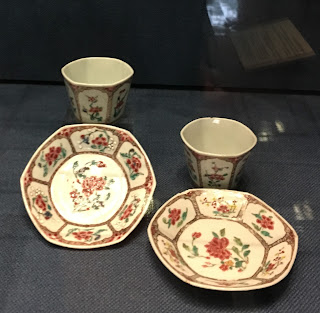Hello and happy Spring! I'm going to be writing a series on the "Japanese Tea Ceremony" experience, known as Chanoyu or Chadō (the Way of Tea). But before we dive into that, I want to share how you can easily make and enjoy a bowl of matcha at home.
And when I say bowl, I mean just that! In this style of drinking matcha, each person gets their own bowl of tea. I'll be making thin tea, called usucha. It's the frothy kind and it's amazing!
It's important to understand that there are many different schools of Chadō, and each has its own way of making tea. There are differences in how to whisk, the desired frothiness, etc. And yet each produces a beautiful and delicious bowl of tea. The school from Japan that I am associated with is Urasenke. My local school is Issoan. Even though the instructions below are not for a tea ceremony, the style I've learned will show through.
In the picture above, you see a shaped "mountain" of matcha in a traditional tea caddy. Below are the typical implements: a bowl, whisk, scoop, tea caddy and a water ladle. You will not need all of these things.
What you WILL need:
- A bowl with a wide enough bottom for the whisk to move freely. Something like a rice or cereal bowl.
- A measuring cup
- A mesh strainer
- Teaspoon
- Bamboo whisk
- Matcha
To make your bowl of matcha:
1. Rinse your bowl with hot water, then dry it out. This pre-warms the bowl and removes liquid that might cause the matcha to clump.
2. Place the mesh strainer over the bowl. Measure in a scant (less than full) teaspoon of matcha. Tap the strainer or use the back of a spoon to push the tea through. Straining the tea helps reduce lumps.
3.Now add between 1/4 and 1/3 cup of hot water, ~170 degrees Fahrenheit. Please do not use boiling water. When I remove my kettle from the heat source and take the lid off, it takes ~3.5 minutes to cool to the right temp.
4. Take your whisk and lightly press down any floating tea. Then move the whisk briskly in a straight up-and-down motion. (Other tea schools do this differently.) See the video below. You do not need to press down hard on the whisk (that can break the tines). Placing your hand over the top of the bowl helps to steady it.
5. Keep whisking until you see a thick foam forming.
Keep going a wee bit longer. Then move the whisk
across the top lightly to pop any big bubbles.


















































